EFS membership
EFS members represent most colleges and departments at the University of Utah. Contact us for more information about membership and EFS events. We welcome all faculty from all disciplines.
Architecture and Planning

|
Jim Agutter, Architecture: Jim Agutter is the Director of the Design Program, an Assistant Professor of Design in the College of Architecture + Planning and Director of Spark Healthcare Innovation Lab. His work has focused on using design and design thinking principles to address challenges across a broad range of disciplines. In addition, he has researched the application of 2D and 3D visual design concepts to large scale, real-time data environments. He is the co-founder of two University of Utah spin-offs, Applied Medical Visualizations and Intellivis and has 8 patents. He was awarded the 2005 Creative Achievement Award with Julio Bermudez by the Association of College Schools of Architecture and the 2009 University of Utah Honors Professorship. |

|
Stephen Goldsmith, Architecture: Stephen Goldsmith is a craftsman, sculptor and founder of Artspace, a non-profit organization that has been developing affordable live/work space, childcare and educational facilities, and incubator space for non-profit agencies in Salt Lake City since 1980. His work has evolved across disciplines including design collaborations on The Seven Canyons Fountain in Liberty Park, the day-lighting of the real City Creek below Memory Grove, and his becoming the first artist/planning director for a major U.S. city, where he served in that role during the 2002 Winter Olympic Games. During the Olympics he produced an international exhibition and symposium titled, The Physical Fitness of Cities: Vision and Ethics in City Building in collaboration with Moshe Safdie and Samina Queraeshi. He went on to become the National Director of the Frederick Rose Architectural Fellowship Program for the Enterprise Foundation. He's currently an Associate Professor at the University of Utah's College of Architecture + Planning, and the University’s Professor for Campus Sustainability for which he created a new course on Empathic Sustainability. He is Director of The Center for the Living City, an organization founded in 2005 with the support and encouragement of Jane Jacobs. His book What We See: advancing the observations of Jane Jacobs, co-authored with Lynne Elizabeth won the Jane Jacobs Urban Communication Prize in 2010. |

|
Ryan Smith, Architecture: Ryan E. Smith is Director of the Integrated Technology in Architecture Center and an Associate Professor of Architecture in the College of Architecture + Planning. Smith’s research focuses on process and product innovation toward realizing building construction efficiency. He is an expert in market analysis and R&D of manufactured products for construction. Smith works directly with government and industry sponsors and partners toward commercialized products and process improvement. He is recipient of the international 2009 ARCC New Researcher Award, 2011 MBI Fellowship, 2011 ENR 20 under 40, 2007 Collaborative Practice Award, and the 2009 and 2011 Creative Achievement Award from the Association of Collegiate Schools of Architecture. |
Business

|
Troy D'Ambrosio, Lassonde Entrepreneur Institute:D'Ambrosio is the executive director of the Lassonde Entrepreneur Institute, the hub for student innovation and entrepreneurship at the University of Utah and a division of the David Eccles School of Business. He works closely with both student and faculty entrepreneurs through many programs and opportunities. D'Ambrosio has directed the Lassonde Institute since its beginnings in 2002, and he has extensive experience as an entrepreneur and mentor. Among many other programs, D'Ambrosio manages the Lassonde New Venture Development Center, which pairs faculty inventors with graduate students who assist with business research and development. |

|
Abbie Griffin, Marketing: Abbie Griffin holds the Royal L. Garff Endowed Chair in Marketing at the David Eccles School of Business at the University of Utah, where she teaches the 1st-year core MBA Marketing Management course. Professor Griffin obtained her B.S. ChE from Purdue University, MBA from Harvard Business School and Ph.D. in Management of Technology from MIT. Her research investigates means for measuring and improving the process of new product development. Her research has been published in Marketing Science, Journal of Marketing Research, Management Science, and the Journal of Product Innovation Management among other journals. Her latest research can be found in the book titled: Serial Innovators: How Individuals in Large Organizations Create Breakthrough New Products. A video trailer about the book can be found at www.abbiegriffin.org. Her 1993 article titled “Voice of the Customer” was awarded both the Frank M. Bass Dissertation Paper Award and the John D.C. Little Best Paper Award by INForms and has been named the 7th most important article published in Marketing Science in the last 25 years. She was the editor of the Journal of Product Innovation Management, the leading academic journal in the areas of product and technology development from 1998 to 2003. The Product Development and Management Association named her as a Crawford Fellow in 2009, and she currently serves as the Vice President of Publications for the Association. She was on the Board of Directors of Navistar International, a $ 13 billion manufacturer of diesel engines and trucks from 1998 to 2009. She currently serves on the Board of Directors of the Intermountain Health and Research Foundation Holiday Quilt Auction. Prof. Griffin is an avid quilter, hiker, and swimmer. |

|
Kathy Hajeb, Lassonde Entrepreneur Institute:Kathy Hajeb is a director at the Lassonde Entrepreneur Institute, the hub for student innovation and entrepreneurship at the University of Utah and a division of the David Eccles School of Business. She works closely with student and faculty entrepreneurs through many programs and engagement opportunities. Hajeb has extensive experience in engineering, consulting, innovation, entrepreneurship and academic administration. Prior to working for the Lassonde Entrepreneur Institute, Hajeb was the chief of staff for the University of Utah's Office of Technology Venture Development. |
|
|
Chris Wasden: Dr. Chris Wasden is the Executive Director of the Sorenson Center for Discovery and Innovation at the University of Utah. Previously he was a Managing Director at PwC and the Global Healthcare Innovation Leader. As a global thought leader on Digital Health and the role that Social, Mobile, Analytic and Cloud technologies are transforming healthcare he has written and published over 40 articles and reports on the topic, and he speaks at over 30 events each year on how Digital Health is transforming the practice of medicine, the delivery of care, and the creation of an entirely new wellness paradigm based upon objective measures that lead to greater engagement and changes in human behavior. He advises leading companies on how mobile sensors and Digital Health innovations can create new markets and opportunities (AT&T, Telefonica, Vodafone, Swisscom, Sharp, HCSC, Nokia, RIM, Roche Diagnostics, Eisai Pharmaceuticals, Genentech, Partners Healthcare, just to name a few). He is a named inventor on 11 issued patents and has been a leader in 10 different startups where he developed many of his ideas around the innovation cycle and lifecycle and how fast, frequent, frugal, and failure accelerates innovation. Dr. Wasden has a doctorate in human and organizational learning from George Washington University in Washington, DC, an MBA from the UCLA Anderson School, and bachelor degrees in accounting (BS) and Asian studies (BA) from Brigham Young University in Provo, Utah. |

|
William Schulze, Management |
Dentistry

|
Mark Durham, Dental Specialist in Prosthodontics: Dr. Mark Durham is a dental specialist in prosthodontics. He maintains a private practice in Utah and provides clinical prosthodontics at the Salt Lake City, Veterans' Affairs Hospital. He is also an Assistant Professor, Chair of Dental Continuing Education, and the Division Chief in Prosthodontics at the University of Utah, School of Dentistry. He is a past GPR Assistant Residency Director, and past dental laboratory manager at the Salt Lake City, Veterans' Affairs Hospital. His DMD is from Case School of Dental Medicine, and his prosthodontic diploma is from Louisiana State University, School of Dentistry. He is the founder of a continuing education company called Dentucation that provides dental education world-wide. |
Education
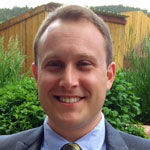
|
Aaron J. Fischer, Educational Psychology: Dr. Fischer has been working with individuals with autism spectrum disorder (ASD) and their families for over 10 years. He graduated from the University of Miami, where he earned a bachelor’s degree in psychology and worked as a research coordinator at the Center for Autism and Related Disabilities. Dr. Fischer completed his master’s and doctoral degree in school psychology at Louisiana State University. Before arriving at the University of Utah in 2014, he completed his predoctoral internship in clinical psychology at the May Institute in Massachusetts. His internship and graduate work focused on providing evidence-based practice in schools, hospitals, and mental health clinics to children with disabilities and their families. Specifically, Dr. Fischer’s clinical interests concentrate on the assessment and treatment of children and adolescents with ASD, as well as providing support and training to their families. As such, his scholarship is considerably influenced by his applied work in those areas. Currently, Dr. Fischer is an assistant professor of school psychology, an adjunct assistant professor of psychiatry, and director of the UNI HOME interdisciplinary pediatric feeding disorders clinic at the University of Utah. Additionally, Dr. Fischer is a Licensed Psychologist and Board Certified Behavior Analyst. He has experience in the assessment and treatment of problem behavior, as well as the acquisition of adaptive skills, in individuals with ASD and developmental disabilities.. |
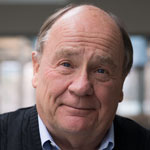
|
William Jenson, Educational Psychology: Dr. Jenson cofounded with Mrs. Carmen Pingree in 1978 the Pingree Autism Center for Learning. After directing CBTU for eight years, Dr. Jenson joined the School Psychology Program in Educational Psychology Department at the University of Utah in 1983. Dr. Jenson is currently a Professor in the Department of Educational Psychology and was Department Chair for 10 years. His research interests include autism, externalizing behavior disorders, the management of noncompliance and aggression, practical classroom behavior management, educational technology, behavioral assessment, academic interventions, and parent training. Dr. Jenson has published over 170 research articles, chapters, and books including the Tough Kid On-Task in a Box Program, Functional Behavior Assessment of Chronic Absenteeism, and Truancy and Interventions Book, Functional Behavior Assessment of Bullying Behavior and Interventions Book, Superheroes Social Skills Training Program, Tough Kid Book, Tough Kid Tool Box: A Resource Book, Tough Kid New Teacher Survival Kit, Tough Kid Parent Training Book: Why Me?, Tough Kid Principal’s Briefcase, Applied Behavior Analysis in Teaching, Understanding Childhood Behavior Disorders, Teaching Behaviorally Disordered Students: Preferred Practices, Best Practices: Behavioral and Educational Strategies for Teachers, Homework Partners Series, and School based interventions for students with behavior problems, and classroom computer products including Get'm on Task program. In 2015, Dr. Jenson won the University of Utah’s Distinguished Innovation and Impact Award for his research in interventions and treatments for children both nationally and international. |

|
John Kircher, Educational Psychology: John C. Kircher is a Professor of Educational Psychology with over 60 scientific publications on the psychophysiological detection of deception. He has received 28 grants and contracts from the DoD, NSF, CIA, NIJ, and U.S. Secret Service. He introduced the first computerized polygraph system and invented the ocularmotor deception test. |
Engineering

|
Orly Alter, Bioengineering, Human Genetics: Orly Alter is a USTAR Associate Professor of Bioengineering and Human Genetics at the Scientific Computing and Imaging Institute at the University of Utah. |

|
Roger Altizer, Entertainment Arts Engineering |
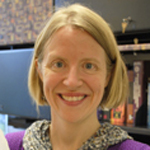
|
Stacy Morris Bamberg, Mechanical Engineering: Stacy Bamberg is an Associate Professor of Mechanical Engineering. Her research focus is on the design of sensors and instrumentation to allow people to evaluate their own physiological conditions away from a clinical environment. She is founder of Veristride, a University of Utah spinout that is focused on her work on gait and movement analysis and feedback using an instrumented insole and phone app. Veristride was awarded an honorable mention for medical device design from the Utah Innovation Awards in 2010. She has focused on gait and movement analysis for more than a decade, and was an invited speaker at the 7th Annual Intl. Conference on Ubiquitous Healthcare in Jeju, South Korea, in 2010. She is also a senior member of the IEEE. |

|
Steve Blair, Electrical and Computer Engineering:Prof. Blair is the Director of the Engineering Clinic program and holds a primary appointment in Electrical and Computer Engineering and adjunct appointments in Bioengineering, Materials Science and Engineering, and Physics. Prof. Blair received his PhD in 1998 from the University of Colorado at Boulder and has research interests in plasmonic materials and devices; biophotonics, including methods for single-molecule detection and development of optical neural interfaces; and silicon photonics. The Engineering Clinic program provides an alternative senior project option for Engineering students through industry-sponsored team projects, and Prof. Blair has been directing this program since 2006. Prof. Blair has filed for over a dozen patents, many of which are licensed. He has been involved in a number of spin-off companies, including Axon Optics, of which he is one of three founders. Prof. Blair is on the Utah Nanofab Executive Committee, is a member of the Nano Institute, and participates in the NSF materials research center (MRSEC). |

|
Rich Brown, Dean of Engineering:Richard B. Brown earned his degrees in electrical engineering. His dissertation research produced one of the first smart sensors, an array of miniature ion-selective electrodes with integrated electronics. He was a faculty member at the University of Michigan for 19 years, and has been Dean of Engineering at the University of Utah since 2004. Prof. Brown and his students have designed high speed microprocessors and highly integrated, low-power microcontrollers, and they have developed silicon-based chemical sensors for small ions, heavy metals and neurochemicals. Brown has 17 patents and has authored more than 225 peer-reviewed publications. Based upon his group’s research, he founded or co-founded four companies, the latest being e-SENS. He is a Fellow of the Institute for Electrical and Electronics Engineers, a recipient of the Utah Governor’s Medal for Excellence in Science and Technology, and a Fellow of the National Academy of Inventors. |

|
Cynthia Furse, Associate V.P. and Professor of Electrical and Computer Engineering: Dr. Furse is the Associate Vice President for Research at the University of Utah and Professor of Electrical and Computer Engineering. Dr. Furse has developed novel methods for locating faults on live electrical wiring and is a founder of LiveWire Innovation, which is commercializing this technology. She has also developed antennas for use in the human body and novel advancements to the FDTD electromagnetic simulation method. Dr. Furse is also an innovative educator and leader in the flipped classroom initiative and has received numerous awards for her teaching. Dr. Furse works to interest young students in engineering and routinely volunteers in Utah's K-12 schools. She is a Fellow of the IEEE. |

|
Bruce Gale, Mechanical Engineering: Bruce K. Gale is a professor of Mechanical Engineering with expertise in microfluidics, sensors, and nanotechnology. He is Chief Science Officer at Wasatch Microfluidics, a company that was spun out of his lab in 2005. He has recently spun out two additional companies from his lab, Espira, Inc. and Guanine, Inc., which are still early stage. |

|
Bob Hitchcock, Bioengineering: Dr. Robert W. Hitchcock, Assistant Professor of Bioengineering, director of Utah BioDesign and director of the Bioengineering Industrial Advisory Board. Bob joined the University of Utah's Bioengineering faculty in 2006 to expand the department's initiatives in medical device design education and innovation. He has over 25 years experience in bringing new products to the marketplace. He is a co-founder of Catheter Connections, Inc.(2008), a former VP of R&D for Sorenson Medical (2002 – 2006), former COO of iSense (2001) and scientific advisory board member for Photokinetics, Inc. (Ogden, UT), MR Board, Inc. (Salt Lake City, UT), Blackrock Technology (Salt Lake City, UT) and SMD, Inc. (Wallingford, CT). Research interests of Dr. Hitchcock's group include implantable sensors, antimicrobial devices for infusion therapy and cardiac tissue engineering. |

|
Chris Johnson, School of Computing, Bioengineering and Physics: Chris Johnson is the founding director of the Scientific Computing and Imaging (SCI) Institute at the University of Utah where he is a Distinguished Professor of Computer Science and holds faculty appointments in the Departments of Physics and Bioengineering. His research interests are in the areas of scientific computing and scientific visualization. Dr. Johnson founded the SCI research group in 1992, which has since grown to become the SCI Institute employing over 200 faculty, staff and students. Professor Johnson serves on several international journal editorial boards, as well as on advisory boards to several national and international research centers. Professor Johnson was awarded a Young Investigator's (FIRST) Award from the NIH in 1992, the NSF National Young Investigator (NYI) Award in 1994, and the NSF Presidential Faculty Fellow (PFF) award from President Clinton in 1995. In 1996 he received a DOE Computational Science Award and in 1997 recevied the Par Excellence Award from the University of Utah Alumni Association and the Presidential Teaching Scholar Award. In 1999, Professor Johnson was Awarded the Governor's Medal for Science and Technology from Governor Michael Leavitt. In 2003 he received the Distinguished Professor Award from the University of Utah. In 2004 he was elected a Fellow of the American Institute for Medical and Biological Engineering, 2005 he was elected a Fellow of the American Association for the Advancement of Science, in 2009 he was elected a Fellow of the Society for Industrial and Applied Mathematics (SIAM) and received the Utah Cyber Pioneer Award. In 2010 Professor Johnson received the Rosenblatt Award from the University of Utah and the IEEE Visualization Career Award. In 2012 Professor Johnson received the IEEE IPDPS Charles Babbage Award and in 2013 Professor Johnson received the IEEE Sidney Fernbach Award . In 2014, Professor Johnson was elected an IEEE Fellow. More at http://www.cs.utah.edu/~crj/. |

|
Robert Kessler, School of Computing: Robert R. Kessler has been on the faculty of the University of Utah since 1983 and is currently the Executive Director of the Entertainment Arts and Engineering Program and also is a professor in the the School of Computing. He earned his B.S., M.S., and Ph.D. in 1974, 1977, and 1981 respectively, all from the University of Utah. His early work was centered on the portable implementation of the Lisp programming language and then distributed and parallel implementations of Lisp. In the early 90's, he founded the Center for Software Science, a state of Utah Center of Excellence, which was a research group working in nearly all aspects of system software for sequential and parallel/distributed computers. In the late 90’s Professor Kessler served as chairman of the Department of Computer Science (which became the School of Computing in 2000). At about that same time, his research interests expanded into software engineering and he also dabbled in agent technologies. In 2007 he co-founded the Entertainment Arts and Engineering (EAE) program as an undergraduate emphasis, then in 2010 co-founded a master’s degree program in EAE. The program has grown to be the #2 best undergraduate and #4 best graduate video game design program in the world and currently has over 200 undergraduate and over 100 graduate students. He has authored two books and over seventy-five journal and conference publications. Professor Kessler has received over $6.5M in external research funding from government and industrial sources and $10M in equipment grants. He has founded two startup companies and has been on the board of directors of several others. He is an award winning teacher having received the College of Engineering Outstanding Teaching Award in 2000 and the University of Utah’s highest teaching honor, the Distinguished Teaching Award in 2001. |
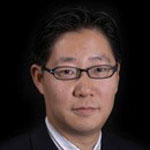
|
Hanseup Kim, Electrical and Computer Engineering: Hanseup Kim is an USTAR Associate Professor in Electrical and Computer Engineering, the co-founder and CTO at a start-up, Solefire, LLC, in Salt Lake City and an Academic Senate in 2016-2019 at the University of Utah. He received his BS degree in Electrical Engineering from Seoul National University in 1997, and his MS and Ph.D. degrees in Electrical Engineering from the University of Michigan in 2002 and 2006, respectively. Between 2006 and 2009, he held a post-doctoral research fellow position at the Center for Wireless Integrated MicroSystems (WIMS) in the University of Michigan working on a micro-scale gas chromatography system for environmental monitoring system. His present research at the University of Utah focuses on the development of integrated micro sensors, actuators and systems for health care and environmental monitoring research including physical/chemical sensors in implantable/wearable forms, miniature low-noise high-performance actuators and in-vitro animal models. Prof. Kim is a recipient of both the prestigious NSF CAREER Award 2012 and the DARPA Young Faculty Award in 2011. He received some Best Paper Awards from academic research communities and a Rotary Club Ambassador Scholarship in 1999. He is an author of over 80 journal and conference publication, 3 book chapters and 7 published and pending patents. |

|
Brenda Mann, Bioengineering: Dr. Brenda Mann is a co-founder and VP for R&D at SentrX Animal Care. She is also research faculty in Bioengineering, and a registered patent agent. Dr. Mann has developed all of SentrX's products, sold worldwide for small and large animals. Her research focuses on biomaterials development and rapid prototyping for tissue engineering. |

|
Brian McPherson, Civil and Environmental Engineering |

|
Miriah Meyer, Science Computer Imaging: Miriah is a USTAR assistant professor in the School of Computing at the University of Utah and a faculty member in the Scientific Computing and Imaging Institute. Her research focuses on the design of visualization systems for helping scientists make sense of complex data. |

|
Neal Patwari, Electrical and Computer Engineering: Neal Patwari has B.S. and M.S. degrees from Virginia Tech and a Ph.D. from the University of Michigan, all in Electrical Engineering. He is an Associate Professor of Electrical and Computer Engineering and Director of the SPAN Lab at the University of Utah. Neal is the Director of Research at Xandem Technology, LLC. |

|
Sandeep Negi, Electrical and Computer Engineering: Sandeep Negi, PhD, holds a position of Research Assistant Professor at the Department of Electrical and Computer Engineering at the University of Utah. In the past few years, he has filed more than ten patents, few of which are licensed by a biomedical company. His research focuses on functional materials, micro sensors and nanotechnology especially for biomedical applications. |

|
Tomasz Petelenz, Bioengineering: Tomasz Petelenz, PhD, holds a position of research Associate Professor at the Department of Bioengineering, University of Utah. Tomasz' interests and expertise encompass projects at all stages of medical and drug delivery systems development from concept, funding procurement, to clinical testing, regulatory compliance and production, including implantable cardiac pacemakers, iontophoretic transdermal drug delivery systems, kidney dialysis machines, infusion and injection devices, biosensors, optical sensors, cardiovascular devices, wireless data communication and prosthetics. Tomasz is also a principal and co-founder of Biomedical Innovations, LC, a consulting company focused on assisting the medical device industry with device development, regulatory compliance, design and management of laboratory, animal and clinical studies, in all product development stages ranging from concept development, device verification, to safety and clinical efficacy demonstration. |

|
Rick Rabbitt, Biomedical Engineering |

|
Florian Solzbacher, Electrical and Computer Engineering: Prof. Solzbacher is Director of the Utah Nanofabrication Laboratory, Co-Director of the Utah Nanotechnology Institute, President and Executive Chairman of Blackrock Microsystems and holds faculty appointments in Electrical and Computer Engineering, Materials Science and Bioengineering at the University of Utah. His research focuses on harsh environment microsystems and materials, including implantable, wireless microsystems for biomedical and healthcare applications, and on high temperature and harsh environment compatible micro sensors. Prof. Solzbacher received his M.Sc. EE from the Technical University Berlin in 1997 and his Ph.D. from the Technical University Ilmenau in 2003. He is co-founder of several companies such as Blackrock Microsystems, Blackrock Sensors and First Sensor Technology. He was a board member and Chairman of the German Association for Sensor Technology AMA and of Sensor + Test trade show and conference from 2001 until 2009, and serves on a number of company and public private partnership advisory boards and international conference steering committees. He is author of over 160 journal and conference publications, 5 book chapters and 16 pending patents. |

|
Ken Stevens, Electrical and Computer Engineering: Ken Stevens is the director of the Computer Engineering program at the University of Utah, CTO of Granite Mountain Technologies (a University of Utah licensee), and holds faculty appointments in the Electrical and Computer Engineering Department and the School of Computing. Ken is also the co-founder of successful software startup in the direct sales industry, and has developed packages for the free software foundation. His research focuses on low power and high performance digital electronics. Devices built from such components are pervasive in today's economy and range from low power hand held devices such as cell phones to high performance cloud based servers. He received a B.A. in Biology and a B.S. and M.S. in Computer Science from the University of Utah as well as a Ph.D. in Computer Science from the University of Calgary. He has worked as a researcher for Fairchild Labs for Artificial Intelligence Research, Hewlett Packard Laboratories, the Air Force Institute of Technology, and Intel's Strategic CAD Labs. Ken is a Senior Member of the IEEE, has served on the steering committee of international conferences, and has over 10 patents and 60 publications. |

|
Prashant Tathireddy, Electrical and Computer Engineering: Dr. Tathireddy is the founder and VP for R&D at Applied Biosensors (http://appliedbiosensors.com). He is also a Research Associate Professor in Electrical and Computer Engineering at the University of Utah with expertise in micro sensors and nanotechnology. His career focus is on translating university research into commercial products with current emphasis on continuous monitoring sensors for bioprocess control. |
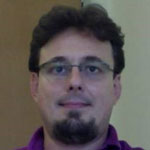
|
Tolga Tasdizen, Electical and Computer Engineering: Dr. Tolga Tasdizen received the B.S. degree in electrical engineering from Bogazici University in 1995. He received his M.S. and Ph.D. degrees in engineering from Brown University in 1997 and 2001, respectively. From 2001 to 2004 he was a postdoctoral researcher in the Scientific Computing and Imaging Institute at the University of Utah. He is currently an Associate Professor in the Department of Electrical and Computer Engineering at the University of Utah. Dr. Tasdizen is also a Utah Science Technology and Research Initiative (USTAR) faculty member in the Scientific Computing and Imaging Institute. His main area of research is image processing and pattern recognition with a focus on applications in biomedical and biological imaging. Dr. Tasdizen is the recipient of several awards including the NSF Early Career Award. He is a member of Bio Imaging and Signal Processing Technical Committee (BISP TC) of the IEEE Signal Processing Society and Associate Editor for IEEE Transactions on Image Processing. |

|
Ashutosh Tiwari, Materials Science & Engineering |

|
Patrick Tresco, Biomedical Engineering |

|
Anil Virkar, Materials Science & Engineering |

|
Ling Zang, Materials Science and Engineering: Prof. Ling Zang is a USTAR faculty. His current research focuses on nanomaterials, optoelectronic sensors and nanodevices, as well as their applications in security, renewable energy, and clean environment. In the past years, he has filed more than fifteen patents, and co-founded two University spinoff companies, Vaporsens Inc., Metallosensors Inc. |
Fine Arts

|
Ellen Bromberg, Modern Dance: Ellen Bromberg is a choreographer, media artist, screendance curator and educator. Her choreography and films have been screened and broadcast nationally and internationally, and she has received numerous awards and grants for her work including a 2012 University of Utah Distinguished Innovation and Impact Award, a John Simon Guggenheim Fellowship, and grants from the National Endowment for the Arts, among others. A Distinguished Professor in the Department of Modern Dance, Ms. Bromberg was the founding director of the Center for Interdisciplinary Arts and Technology and is also the founding director of the first Graduate Certificate in Screendance. |

|
Craig Caldwell, Film and Media Arts: Craig Caldwell, USTAR (Utah Science Technology and Research) Professor, Film and Media Arts Department and Adjunct in the School of Computer Science. Director of the Arts, Entertainment Arts and Engineering. Ranked #1 in 2013 by Princeton Review. Industry experience: Walt Disney Feature Animation and Electronic Arts. Academic background includes Head of the largest Film School in Australia at Griffith University, Brisbane; and Head of the Media Arts Department, University of Arizona, Tucson. Recent conference presentations - FMX2013, SIGGRAPH ‘13, Mundos Digitales ‘14, and SIGGRAPH Asia ’14. |

|
(David) Michael Cottle, U of U School of Music: Mike Cottle is director of the experimental music studios at the University of Utah, where he teaches music technology, audio engineering, and computer assisted composition and sound design. Since the 90's Dr. Cottle's compositional work has been exclusively algorithmic and generative; typically coded experiments for CPU playback that are, by design, too complex for human performance. He is also an active sound engineer, recording over 200 art music concerts and recitals each year, including The Utah Symphony, MOTUS, the School of Music, Utah Arts Festival, Utah Chamber Artists, NOVA, Utah Choral Artists, The Gifted School, Naxos, Centaur, SEAMUS (2008), and Performance Today. His innovative recording system at the music school has revolutionized how faculty and students teach and learn. He has an international cult following through publications that include Beyond MIDI (MIT Press, 1997), SuperCollider, The Book (MIT Press, 2011—co-contributing editor), and Computer Music with Examples in SuperCollider and Logic Pro, 2012. |

|
Devin Maxwell, Associate Instructor, School of Music: Composer, performer, and entrepreneur Devin Maxwell is an associate instructor at the University of Utah. Before his academic career, he co-founded the LoudLouderLoudest Music Production company, a leading digital media service company whose clients included Sony Music, Warner Music Group, and other top-tier entertainment brands. Based on the belief that commercial work can incubate and support innovative creative work, he then co-founded Listen/Space, an experimental music venue turned commissioning organization, and the Vu Symposium for Experimental, Electronic, and Improvised Music based out of Park City, Utah. He is currently the executive director for the Louis Moreau Institute for New Music Performance and sits on the board of the Weilenmann School of Discovery and the Salty Cricket Composers Collective. His original creative work is regularly performed by national and international ensembles. |

|
Sydney Cheek-O’Donnell,Theatre: Sydney Cheek-O’Donnell is Head of Theatre Studies, an Associate Professor in Department of Theatre, and Co-Director of the Initiative for Theatre, Performance, and Medicine (ITPaM). In addition to working in the professional theatre as a dramaturg of revivals and new plays, she applies theatrical principles in medical settings to improve communication and patient care and to facilitate understanding of complex ethical and social issues. She has created several short theatre pieces used by the Utah Pediatric Partnership to Improve Healthcare Quality, and is currently developing an empirically based theatrical approach to improving communication between health care providers and patients with Dr. Gretchen Case of the Division of Medical Ethics and Humanities. |

|
Eric Handman, Modern Dance: Eric Handman is an Assistant Professor in the Department of Modern Dance. He specializes in emergent creative processes, technique, improvisation, composition, qualitative research methods, aesthetics, criticism and theory. He is interested in how gaming technologies can be used to enhance creativity. He is working on interactive software for music visualization. |

|
V. Kim Martinez, Art & Art History: V. Kim Martinez, Associate Professor is a painter, multi-media artist, community muralist and studio faculty. She exhibits nationally and internationally and has received numerous grants, artist residencies and awards including the National Endowments for the Arts, through the Utah Arts Council “Challenge America,” the University of Utah Tanner Humanities Professors Off-Campus Project and the Distinguished Innovation and Impact Award. Currently, she is the Graduate Director of the Department of Art & Art History MFA Studio Program. |

|
Luc Vanier, School of Dance: Luc Vanier (MFA, MAMSAT) is the Director of the School of Dance at the University of Utah. He was a Principal Dancer and company choreographer with Ohio Ballet. His choreography has been produced at the Joyce Theater in New York City and toured nationally. Vanier has lectured and presented his research extensively nationally and internationally and his co-authored book “Dance and the Alexander Technique” was published by University of Illinois Press. He founded the Integral Movement Lab where he co-created Framework for Integration, a movement analysis system that helps direct all movers make new, healthier movement decisions and encourages more coordinated and integrated bodily use. |
Health

|
Bradley Hayes, Exercise & Sports Science: Dr. Bradley Hayes is Business Operations Manager and Director of Athletic Training Education at the University of Utah. His educational background includes a BA from DePauw University, a MS in Athletic Training from Indiana State University, and a PhD in Human Performance from Oregon State University. In addition to Sports Medicine, Dr. Hayes has worked as a licensed stock broker and customer service representative for Charles Schwab. Dr. Hayes research background includes modalities specific to intramuscular tissue temperature, the neurological system specific to human reflex response to performance and function, as well as, technology development and innovation in the area of wireless health monitoring and equipment. |

|
James Martin, Exercise & Sports Science |

|
Les Podlog, Health, Kinesiology and Recreation: Les Podlog is an Associate Professor in Sport and Exercise Psychology in the Department of Health, Kinesiology and Recreation. He has held faculty positions at Texas Tech University (USA), Charles Sturt University (Australia), and the German Sport University (Germany). His research focuses primarily on the psychological aspects of injury rehabilitation and the psychosocial determinants of physical activity. He has mentored numerous graduate students and has presented his research nationally and internationally. He is developing services to enhance mentorship of graduate students and to facilitate peer reviewed publication among non-native English speakers. . |
Humanities

|
Karin Baumgartner, Dept. of Languages & Literature |

|
Katharine Coles, English: Katharine Coles’ fifth poetry collection, The Earth Is Not Flat (Red Hen 2013), was written under the auspices of the National Science Foundation’s Antarctic Artists and Writers Program; ten poems from the book, translated into German by Klaus Martens, appeared in the summer 2014 issue of the journal Matrix. Her sixth collection, Flight, is due out in 2016. She has also published two novels. Recent poems and prose have appeared in Poetry Northwest, Seneca Review, Virginia Quarterly Review, Image, Crazyhorse, Ascent, and Poetry; ten poems, translated into German by Klaus Martens, appeared in 2014 in the journal Matrix. A professor at the University of Utah, in 2009-10 she served as the inaugural director of the Poetry Foundation’s Harriet Monroe Poetry Institute. She has received grants and awards from the NEA, the NEH and, in 2012-13, the Guggenheim Foundation. |

|
Sean Lawson, Dept. of Communication: Sean Lawson is assistant professor in the Department of Communication. His Ph.D. is from the Department of Science and Technology Studies at Rensselaer Polytechnic Institute. His research focuses on the relationships among science, technology, and the development of military theory, in particular the intersections of national security and military thought with nonlinear sciences and information technologies. In addition to his academic work, he also writes about these topics for Forbes and for CTOVision. |
Law

|
Ken Chahine |

|
Aaron Dewald, Director of Technology Initiative: Aaron is currently the Associate Director of the Center for Innovation and Legal Education and a PhD student in learning science. Aaron's success as a educational technology professional undoubtedly stems from his ability to focus that same energy and passion into his work, studies, and entrepreneurial activity. |

|
Amelia Rinehart, College of Law: Professor Rinehart joined the faculty in 2010 following two years as a Visiting Assistant Professor of Law at Florida State University. Prior to entering the legal academy, she practiced law for several years at Orrick, Herrington & Sutcliffe L.L.P. in New York, and Jones, Walker, Waechter, Poitevent, Carrère & Denègre L.L.P. in Baton Rouge, Louisiana, where she specialized in intellectual property litigation, procurement, and counseling. Professor Rinehart is a registered patent attorney and her scholarship focuses on patent law and theory. Professor Rinehart received her J.D. from the University of Chicago Law School in 2002. She received a Master of Science in biomedical engineering from Tulane University in 1997, and a Bachelor of Science in biomedical engineering, summa cum laude, with Departmental Honors from Tulane University in 1996. Prior to attending law school, Professor Rinehart worked as an engineer at Johnson Space Center in Houston, Texas. Professor Rinehart teaches Contracts, Patent Law, Intellectual Property Survey and Intellectual Property Workshop. |
Medicine

|
Jay Agarwal, Plastic/Reconstructive Surgery: Dr. Jay Agarwal is an Assistant Professor of Plastic Surgery at the University of Utah. He was born and raised in Michigan where he attended college at the University of Michigan in Ann Arbor. He graduated from medical school at Case Western Reserve University in Cleveland, Ohio and then went on to complete residency training in both General Surgery and Plastic Surgery at The University of Chicago. Dr. Agarwal's training in Chicago gave him a solid foundation in general reconstructive plastic surgery, aesthetic surgery, and pediatric plastic surgery. After six years in Chicago, he went on to further specialize in Hand Surgery and Microvascular Surgery at the world renowned Buncke Clinic in San Francisco. Dr. Agarwal is board certified in Plastic and Reconstructive Surgery. |

|
Bala Ambati, Opthalmology and Visual Sciences: Dr. Bala Ambati, MD, PhD, MBA, is a cornea specialist with a research focus in angiogenesis. Splitting his time equally between clinic and research, his most significant basic science research advances have been the identification of sFlt-1 as the prime mediator of corneal avascularity (published in Nature and recognized by Science as a Signaling Breakthrough of the Year) and the development of Flt-1 intraceptors as a novel intracellular anti-VEGF therapy, of significant impact as current anti-VEGF agents work only extracellularly. Clinically, Dr. Ambati was the first to describe use of bevacizumab (Avastin) to treat corneal transplant rejection. He has developed key surgical innovations including the technique of posterior endothelial rotational lamellar keratoplasty (PERL-K) as a non-transplant treatment for Fuchs dystrophy, a D-shaped ultrasound tip enabling carousel technique within the lens capsular bag, and a novel DSEK forceps. Dr. Ambati has also been recognized for his teaching excellence by a University of Utah Resident Research Mentor Award and by serving as an Instructor at the Harvard Cataract Course for 2009 and 2010. |

|
Alberto Bosque, Department of Pathology: I received my PhD at the Universidad de Zaragoza, Spain. My field of study was signal transduction in human T cells. I joined the Department of Pathology at the University of Utah in 2006 as a postdoctoral fellow and I became Research Assistant Professor in 2011. In July 2015, I will become Assistant Professor and I will receive a M.B.A from the University of Utah. My research focuses in understanding the mechanisms that control HIV-1 latency. This process is thought to be the last barrier towards eradication of HIV-1 from infected patients. In particular, I am interested in understanding signaling pathways that reactivate latent HIV-1 in primary human memory CD4+ T cells, the main HIV-1 reservoir, and in using this knowledge to generate therapies designed towards a cure for HIV. |

|
Orly Ardon, Department of Pathology: I am a graduate of the Hebrew University of Jerusalem (BSc in plant pathology, MSc and PhD in microbiology) with postdoctoral training in yeast genetics and HIV biology at the Department of Pathology, University of Utah. I joined ARUP R&D in 2007 and am a graduate of the EMBA program at the University of Utah (2012). |

|
James Ashworth, Psychiatry |

|
Anne Blaschke, Pediatric Administration: Dr. Anne Blaschke's research focuses on molecular diagnostic testing for infectious disease. Since 2006 she has collaborated with BioFire Diagnostics, Inc. to develop their FilmArray® platform, a real-time multiplex PCR platform suitable for use at the point‐of-care. She is the Director of the University of Utah's Molecular Microbiology Laboratory focusing on the translational use of rapid diagnostics to transform clinical care. |

|
David Bull, Cardiothoracic Surgery |

|
David Bull, Cardiothoracic Surgery |

|
Doug Carrell, Surgery (Andrology) and Human Genetics: Dr. Carrell is a Professor of Surgery and Human Genetics specializing in clinical aspects of infertility lab services, as well as an expert in genetic and epigenetic aspects of male infertility and human embryogenesis. He has authored more than 190 peer-reviewed research manuscripts, edited 8 books, and is co-editor in chief of Andrology, a leading journal in the field. He is currently the president of the Society of Male Reproduction and Urology. Dr Carrell has been a co-founder of two university sin-offs, Episona and Nanonc. |

|
Gretchen A. Case, Medical Ethics and Humanities, Internal Medicine, Pediatrics: Gretchen A. Case is Assistant Professor in the Division of Medical Ethics and Humanities, the Department of Internal Medicine, and the Department of Pediatrics. She received a BA in Speech Communication and History and an MA in Communication Studies from UNC-Chapel Hill and a PhD in Performance Studies from UC, Berkeley. Dr. Case's research and teaching interests are in the medical humanities: the many ways in which the arts and humanities intersect with the medical arts and sciences. Her scholarly projects often combine communication, performance, disability theory, cultures of medicine, oral history, and ethnography. Dr. Case also has more than ten years of experience as a public historian, specializing in histories of science and medicine. She is currently and is currently developing an empirically based theatrical approach to improving communication between health care providers and patients with Dr. Sydney Cheek-O’Donnell in the Department of Theatre. |

|
Wendy Chapman, Biomedical informatics: Wendy Chapman is the chair of the Department of Biomedical Informatics. Dr. Chapman’s research focuses on developing and disseminating resources for modeling and understanding information described in narrative clinical reports. She helps develops resources for improving the NLP development process (such as shareable annotations and open source toolkits) and in developing user applications to help non-NLP experts apply NLP in informatics-based tasks like clinical research and decision support. |
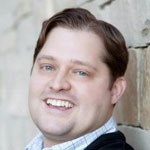
|
John Dayton, Physician: Dr. John Dayton is an emergency physician, entrepreneur, and educator. To help connect physicians with medical device experts, patent attorneys, bizdev gurus, and other healthcare innovators, he co-founded Utah's Chapter of the Society of Physician Entrepreneurs. John also is a member of the SLC Angels and both an investor and Board Members for several local health startups. He is the founder of MedForums, a "yelp" for physicians, with a goal of improving healthcare by helping physicians crowdsource each other to find the best practice tools. John is a local and national leader with his specialty society, the American College of Emergency Physicians (ACEP), and serves as the Utah ACEP President and as Chair-Elect for the Freestanding Emergency Center Section. |

|
Ed Dudek, Physiology |

|
Gregory S. Hageman, Ophthalmology and Visual Sciences: Gregory S. Hageman, Ph.D., is the John A. Moran Presidential Professor of Ophthalmology and Visual Sciences at the University of Utah John Moran Eye Center, where he is also the Executive Director of the Moran Center for Translational Medicine. He holds additional appointments as Professor Universite Decartes Paris and Associate Faculty in the Center for the Study of Macular Degeneration, University of California, Santa Barbara and has received honorary Professorships at Queen’s University, Belfast, UK and the Shandong Eye Institute, Qingdao, China. Dr. Hageman is a graduate of the University of Southern California, where he conducted both his undergraduate and graduate studies in biology and marine biology. He was previously the Iowa Entrepreneurial Professor and Director of the Cell Biology and Functional Genomics Laboratory at the University of Iowa. He has been at the University of Utah since 2009. Dr. Hageman is an author or co-author of over 125 refereed and invited publications, as well as over 100 issued patents and pending patent applications. Dr. Hageman’s early scientific studies contributed to our understanding of the interphotoreceptor matrix in retinal adhesion and photoreceptor viability, as well as the role of pharmacologic vitreous disinsertion in ocular diseases. His primary research interest over the past 24 years has been directed toward the genetics and assessment of pathways involved in the etiology of age-related macular degeneration (AMD), the leading cause of irreversible worldwide blindness. Dr. Hageman has garnered contiguous funding over the past 23 years from the National Eye Institute/National Institutes of Health. Most recently, he was the principal investigator of a $14.7M R24 translational award supported by NIH/NEI and involving colleagues from 12 participating national and international institutions. Dr. Hageman was the scientific founder of Optherion, Inc., an early-stage biotechnology company that is developing a platform of diagnostics and therapeutics for the treatment of AMD and other chronic diseases and conditions involving the complement alternative pathway. |

|
John Fang, Gastroenterology: John C. Fang M.D., is the Clinical Director and Professor Medicine of the Division of Gastroenterology at the University of Utah Hospital and Huntsman Cancer Institute. He specializes in Barrett's Esophagus, Enteral Nutrition, Esophageal Diseases, GI Motility, Gastroesophageal Reflux Disease (GERD), and Therapeutic Endoscopy. Dr. Fang's research interests include: enteral feeding, endoscopic device development, new endoscopic techniques and Barrett's esophagus. He has lead trials involving eosinophilic esophagitis, GERD, feeding tube technology and therapeutic endoscopy. He has authored over 50 peer reviewed journal articles, reviews and book chapters. He has been director the University of Utah and Brigham and Woman's Therapeutic endoscopy course for the past 10 years. He also is an invited speaker to regional and national meetings in his areas of expertise. Dr. Fang received his Medical Degree from Washington University School of Medicine and trained in Internal Medicine at Temple University Hospital and Gastroenterology at the University of Virginia Health Sciences Center. Dr. Fang is board certified in Gastroenterology. Dr. Fang is the Clinical Director for the Division of Gastroenterology and Medical Director of Endoscopy at the University of Utah Hospital. He is currently a member of the American College of Gastroenterology FDA Committee, a member of the American Society for Gastrointestinal Endoscopy Public Relations Committee and chair of the enteral nutrition special interest group. |

|
Norman Foster, Alzheimer Clinic: A board certified geriatric neurologist, Dr. Norman Foster has specialized in brain imaging and dementing diseases for 30+ years. His research focuses on clinical features and pathophysiology of neurodegenerative disorders, brain imaging (especially validating imaging in clinical care), clinical drug trials, and pragmatic studies to improve evaluation, diagnosis and treatment of cognitive disorders. |

|
Christopher Gregg, Neurobiology & Anatomy and Human Genetics: Dr. Christopher Gregg is an assistant professor and joined the University of Utah in 2011. He is a New York Stem Cell Foundation Robertson Neuroscience Investigator and recipient of the Eppendorf & Science Prize for Neurobiology. His research focuses on studies of the mammalian genome and epigenome, and the development of new behavioral screening technologies. The Gregg lab is developing new strategies to diagnose and treat complex human diseases with a focus on neurodevelopmental disorders, such as autism and intellectual disability, as well as cancer. |

|
Janet Iwasa, Biochemistry Department: Janet Iwasa is a research assistant professor in the Biochemistry Department at the University of Utah. Her broad goal is to create accurate and compelling molecular and cellular visualizations that will support research, learning and scientific communication. Janet's award-winning illustrations and animations have appeared in scientific journals including Nature, Science and Cell, as well as in the New York Times. Her work has also been featured on television and in museum exhibits. Janet was named a 2014 TED fellow and recognized as one of the "100 Leading Global Thinkers" of 2014 by Foreign Policy magazine and one of the “100 Most Creative People” of 2012 by Fast Company magazine. As a postdoctoral fellow, she created a multimedia exhibit with Nobel Laureate Jack Szostak (Harvard University) and the Museum of Science, Boston, and later worked on biological visualizations as a faculty member at Harvard Medical School. She received her Ph.D. in 2006 from the University of California, San Francisco for her work on the actin cytoskeleton in the laboratory of Dyche Mullins, and completed 3D animation training at the Gnomon School of Visual Effects later that same summer.. |
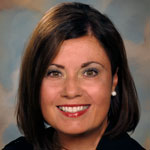
|
Margit Janat-Amsbury, Oncology: I currently serve as the Research Director and Associate Professor for the Division of Gynecologic Oncology at the University of Utah. Developing my career as MD, PhD in the field of gynecologic oncology, I have focused my scientific interests towards the generation of disease models that faithfully recapitulate the human scenario, including development of patient-derived xenograft (PDX) models for gynecologic cancers, as well as immune-competent mouse models. We utilize these models to develop and clinically translate new cancer therapies, drug delivery, and nanomedicine-based technologies. The development of these relevant model systems for preclinical testing is expected to yield more predictable information helpful to advance these novel products to clinical applications and the marketplace. I am fortunate having continuously been funded for my research to allow my translational research experience to expand and grow. I developed and guided several therapeutics and devices from bench to bedside. One example includes a novel intraperitoneal IL-12 polymeric cancer immune therapy to treat ovarian cancer patients with recurrent disease. Known as GOG-170Q this drug successfully advanced through nationwide clinical trials allowing me to expand my knowledge beyond the translational and clinical space into regulatory matters. The importance of timely and successful translation of laboratory findings into the clinic and the pateints benefit define my main missions to create more gynecologic cancer focused grant funding by fostering interdisciplinary collaborations with the goal to build a stronger, “Translational Women’s Cancer Program” here at U of Utah. To achieve the aforementioned goals, I founded our multidisciplinary laboratory in 2007 to work in the key areas of generating more predictive disease models for gynecologic malignancies, and developing innovative bench-to-bedside strategies for vaginal and intraperitoneal drug delivery technologies. We aim to facilitate partnerships across campus as well as other academic institutions and industry to translate novel findings efficiently to the clinic and train the next generation of scientists committed to make a difference in women’s cancer care. |

|
Dan Kadrmas, Radiology: Dan Kadrmas, Ph.D., Professor of Radiology, is an imaging physicist and biomedical engineer in the Utah Center for Advanced Imaging Research (UCAIR) specializing in advanced functional imaging in oncology and cardiology. He is the Founder and Chief Science Officer of MultiFunctional Imaging, LLC, a software medical device company that provides patented solutions for multi-tracer cardiac and cancer imaging with positron emission tomography (PET). |
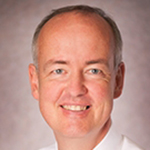 |
Kai Kuck, Anesthesiology |

|
Bradley Katz, Ophthalmology and Visual Sciences: Dr. Bradley Katz is an Associate Professor of Ophthalmology at the John A Moran Eye Center, University of Utah Health Sciences Center. He is also CEO of Axon Optics (axonoptics.com). Axon is developing thin film spectacle coatings for the treatment of migraine. |

|
Michael Kay, Biochemistry, School of Medicine: Since joining the Department of Biochemistry in 2001, Kay has focused on developing D-peptide viral entry inhibitors, particularly against HIV/Ebola. He co-founded Navigen's D-peptide Business Unit, which is advancing these inhibitors towards the clinic. Michael received his MD/PhD at Stanford (Buzz Baldwin) and postdoc at MIT (Peter Kim). |

|
David Krizaj, Opthalmology and Visual Sciences: Dr. David Krizaj is an Associate Professor of Ophthalmology and Deputy Director of Research at the John Moran Eye Institute. PhD, New York University (Physiology & Biophysics). He is the co-Founder and CEO of Asha Vision, a company developing neuroprotective and pressure-stabilizing treatments for glaucoma. |

|
John Langell, General Surgery Faculty: John Langell, MD, PhD, MPH is Executive Director of the Center for Medical Innovation and a minimally invasive gastrointestinal and endocrine surgeon at the University of Utah and Chief of General Surgery at the George E. Wahlen VA Medical Center. Dr. Langell Completed his Bachelors of Science degree at the University of California at Los Angeles and his Doctor of Medicine degree at Drexel University in Philadelphia. |

|
Stephen Lessnick, Pediatric Hematology/Oncology |

|
Anthea Letsou, Human Genetics |

|
Dean Li, Molecular Medicine Program: Dean Li, MD, PhD is the HA and Edna Benning Endowed Professor of Medicine and Cardiology. He was the Director of the Vascular Biotherapeutics Center of Excellence at the University of Utah. This Center of Excellence has spun off two companies. The first, Hydra Biosciences, is located in Cambridge, MA, and was co-founded by Dr. Li in 2001. Dr. Li served as CSO until late 2003 and returned to the University full time in 2004, following successful completion of two rounds of financing amounting to 28 million dollars. The second, Navigen, is located in Salt Lake City and was established in 2006. Dr. Li is currently the founding CSO of Navigen. This company is commercializing new medicines for stabilizing vessels in the treatment of vascular eye diseases, acute lung injury and other inflammatory/ischemic diseases. |

|
Gang Liu, Radiobiology: Gang Liu Ph.D. is an Associate Professor in the Department of Radiology at the University of Utah. His research focus is the development of novel targeted chelation agents as potential pharmaceuticals and medicines for various diseases. He is also interested in studying the roles of metal ions in biological systems. |

|
Robert Marc, Ophthalmology and Visual Sciences: Robert E. Marc is a Distinguished Professor, Hatch Presidential Chair in Ophthalmology, Director of Research, Univ. of Utah Department of Ophthalmology. PhD Neuroscience at University of Texas / Houston (1975). In 1996, he and Ann Torrence co-founded Signature Immunologics, Inc. |

|
Stephane Meystre, Biomedical Informatics: Dr. Stephane Meystre's expertise in clinical informatics research involves easing access to clinical data for clinical care and research purposes using advanced techniques such as Natural Language Processing for information extraction and automated text de-identification. He also specializes in ontologies development automation, knowledge representation, and clinical text disambiguation. |

|
Matthew Movsesian, Cardiology: As a clinical cardiologist specializing in the treatment of advanced heart failure and a molecular biologist studying intracellular signaling in failing heart muscle, I lead a research program focused on the discovery and development of therapeutic agents that can mitigate damage and improve contractile function in diseased hearts. |

|
Dick Normann, Ophthalmology and Visual Sciences: Dr. Richard A. Normann, Distinguished Professor of Bioengineering and Ophthalmology, is the director of the Center for Neural Interfaces, a Utah State Center of Excellence (1995-2000). He was co-founder of Bionic Technologies, Inc (1995-2002), a company focused on the sale of tools for recording and stimulation of large populations of neurons in the central and peripheral nervous systems. In 2002, this company was acquired by Cyberkinetics Neurotechnologies, Inc. (Foxborough, MA). Cyberkinetics was acquired in 2008 by Blackrock Microsystems which has continued the development of research and clinical applications of the Utah Electrode Array technologies. |

|
Randall Olson, Ophthalmology and Visual Sciences: Randall J. Olson, MD joined the University of Utah faculty in 1979 as an Associate Professor and Division Chief when ophthalmology was only a one-person operation. Since then he has worked aggressively to expand ophthalmology by building two centers, and recently by being recognized as a Vision Institute. The department now has 48 faculty of which over a third have vision research as their primary mission, and the clinical mission represents over 100,000 outpatient visits and 5000 surgeries a year. He has over 300 publications primarily in the area of complications of cataract surgery. He is Professor and Chair of the Department of Ophthalmology and Visual Sciences, Director of the Vision Institute, and CEO of the John A. Moran Eye Center at the University of Utah. |

|
Siam Oottamasathien, Human Molecular Biology and Genetics: Siam Oottamasathien, MD, launched a pediatric urology basic science research program for the group in 2007. His initial work was in the Department of Human Molecular Biology and Genetics at the University of Utah, investigating the role of T-box proteins in genitourinary development. During that time, he gained invaluable research tools, developed elaborate experimental designs, including the use of germ-line and conditional mutagenesis experiments in mice, and further enhanced his background in genitourinary embryology, molecular biology, and developmental biology. In addition, he was awarded a three year NIH T32 training grant (5T32HL079874) under the auspices of Nobel Laureate Dr. Mario Capecchi and received NIH loan repayment program (LRP) funding for pediatric research. After spending a year and a half along this line of research, more clinical translational science was necessary and he partnered with the laboratory of Glenn Prestwich, PhD, a Senior Investigator and Presidential Professor of Medicinal Chemistry at the University of Utah. Since establishing his collaboration with Dr. Prestwich, his projects have demonstrated great potential in making a significant impact towards treating pediatric urologic disease conditions. The scientific aspects build upon novel hyaluronic acid (HA) – based biomaterials and have been used to investigate and treat bladder inflammatory and fibrotic conditions. Thus far, he has obtained grant funding from the National Kidney Foundation – Utah Chapter, Early Career Development Award from the Primary Children’s Hospital Foundation, NIH K12 Career Development Award (UL1RR025764) University of Utah Center for Clinical and Translational Science, American Urological Association/Pfizer Award for Investigation in Benign Urologic Disease, Primary Children’s Hospital Integrated Science Award, and an NIH Phase I SBIR Grant (R43DK093413) in conjunction with a small start up company GlycoMira Therapeutics that Dr. Oottamasathien is a part of. Recently, Dr. Oottamasathien received NIH R01 funding to further investigate the treatment of bladder pain by novel glycosaminoglycan derivatives (R01DK100868). Dr. Oottamasathien has also been a three-time recipient (2006, 2010, 2012) of the prestigious Basic Science Research Award presented by the American Academy of Pediatrics Section on Urology. He was also selected in 2013 by the Society of Pediatric Urology as their early career investigator representative and presented his group’s work at the 2013 American Urologic Association Annual Meeting showcasing the best of the best early career investigators. At this forum, he was awarded 2nd place honors. His research efforts continue to represent significant, innovative, and high-impact science that continues to move the field of urology forward. |

|
Dennis L. Parker, Radiology Research: I am a medical physicist with over 30 years experience in research in physics applied to medical imaging. In about 1979, while developing a CT scanner for radiation therapy planning, I performed early experiments to test whether MRI could be used to measure temperature and in the early 1980’s I published the first papers showing that MRI could be used to create images of temperature. I came to the University of Utah in 1982, and have ever since been involved in developing medical imaging research programs, with an emphasis on MRI research. I have supervised a large number of students who have obtained PhD’s and have taken productive careers in academics and industry. I have worked with several other faculty and the Chairs of Radiology to develop the Utah Center for Advanced Imaging Research (UCAIR), which functions to provide imaging infrastructure to support research throughout the campus. We have established several interdisciplinary research programs in conjunction with UCAIR, including the collaboration between Radiology, Mechanical, Electrical, and Bio-Engineering, Oncology and Surgery, to develop our program in MRI guided High Intensity Focused Ultrasound (HIFU). In this program I have been able to continue to work with students and post docs in developing improved MRI temperature measurement methods. Our research has received support from Siemens Medical Solutions, and three R01 grants from the NIH. With funding from an academic / industrial partnership with Siemens and Image Guided Therapy (IGT, Bordeaux, France) (R01 CA 134599) we developed a system for MRI guided focused ultrasound treatment of breast lesions. We have received a new R01 (CA 172787) to take this system to human use in the USA. With IGT, we are developing a commercial version of this system, and have sold the first unit to the University of Bordeaux for a clinical trial starting this year. The second active MRgHIFU NIH grant (R01 EB013433) is a collaboration with centers in the US, Toronto, and Paris, France to develop rapid, high spatial resolution, temperature imaging throughout the brain for monitoring the safety and efficacy of transcranial MRgHIFU. |

|
Amit Patel, Cardiothoracic Surgery: Amit Patel, MD, MS, is an associate and the Director of Clinical Regenerative Medicine and Tissue Engineering at the University of Utah School of Medicine. His clinical interests include heart surgery for coronary disease, valve repair and replacement, heart failure, aortic surgery and stent grafts. Thoracic interests include lung and esophageal surgery. Dr. Patel's research includes studies in autologous stem cell therapy- researching the effects of stem cell transplantation in treating cardiomyopathy, limb ischemia(inadequate blood flow to the leg), and skin graft regeneration following burn injuries. In addition to cardiac research his thoracic research includes cancer stem cell identification and destruction, as well as novel agents to selectively attack lung cancer, thoracic sarcoma, and metastatic diseases. |

|
Kathryn Peterson, Gastroenterology |
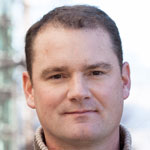
|
Aaron Quinlan, Genetics: Dr. Aaron Quinlan, Ph.D., is an Associate Professor in the Departments of Human Genetics and Biomedical Informatics at the University of Utah. He is also the Associate Director of the USTAR Center for Genetic Discovery. He obtained his bachelor’s degree from the College of William and Mary and his Ph.D. from Boston College where he focused on population genetics, new methods for emerging DNA sequencing technologies, and the characterization of genetic variation. He performed a postdoctoral fellowship at the University of Virginia where he developed expertise in structural variation of mammalian genomes and somatic genome mutation. He started his laboratory at the University of Virginia in 2011 and began his faculty position at the University of Utah in early 2015. Broadly speaking, his research is focused on the development and application of new computational and statistical techniques for understanding the biology of the genome. His team tackles problems with practical importance to understanding genome variation, chromosome evolution and mining genetic variation related to human disease. Understanding the genome is a hard problem; he endeavors to develop new approaches to make genomic research easier. We are currently focused on the creation of improved techniques for rapid and accurate clinical interpretation of human genomes. |

|
Jo-Anna Reems, Hematology and Hematologic Malignancies: Jo-Anna Reems, Ph.D. is a Research Associate Professor in the Division of Hematology and Hematologic Malignancies and Scientific Director of the Cell Therapy & Regenerative Medicine (CTRM) Program at the University Of Utah School Of Medicine. Dr. Reems earned her Ph.D. in Biochemistry at the University of Colorado Health Sciences Center and completed a Research Fellowship at Fred Hutchinson Cancer Research Center, where she developed a research focus on understanding Regulators of Hematopoiesis. In her current role as the Scientific Director of the CTRM program, Dr. Reems' vision is to create a premier Cell Therapy and Regenerative Medicine Center of Excellence in the state of Utah that facilitates the delivery of cutting-edge novel cellular therapies and tissue engineered products that will extend and improve the quality of life of individuals suffering from debilitating diseases and injuries. |

|
Jared Rutter, Biochemistry: Jared Rutter received his B.S. degree from Brigham Young University in 1996. He joined the PhD program at the University of Texas-Southwestern Medical Center and completed his thesis research in the laboratory of Dr. Steve McKnight. Upon graduation in 2001, he became the Sara and Frank McKnight Independent Postdoctoral Fellow at the same institution. In 2003, Dr. Rutter became an Assistant Professor in the Department of Biochemistry at the University of Utah, where he was promoted to Associate Professor with tenure in 2009. |
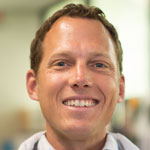
|
Robert Schlaberg, Pathology Jared Rutter received his B.S. degree from Brigham Young University in 1996. He joined the PhD program at the University of Texas-Southwestern Medical Center and completed his thesis research in the laboratory of Dr. Steve McKnight. Upon graduation in 2001, he became the Sara and Frank McKnight Independent Postdoctoral Fellow at the same institution. In 2003, Dr. Rutter became an Assistant Professor in the Department of Biochemistry at the University of Utah, where he was promoted to Associate Professor with tenure in 2009. |
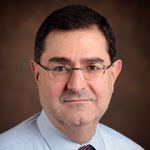
|
Paul Shami, Hematology: Dr. Paul Shami is a Professor of Medicine in the Division of Hematology and Hematologic Malignancies at the University of Utah and a Member and Clinical Investigator at the University’s Huntsman Cancer Institute. He is an Adjunct Professor in the Department of Pharmaceutics and Pharmaceutical Chemistry. He graduated with a Bachelor of Science in Chemistry and a Doctor of Medicine degrees from the American University of Beirut. He pursued his residency training in Internal Medicine and a fellowship in Hematology/Oncology at Duke University in Durham, North Carolina. He trained in the laboratory of Dr. J. Brice Weinberg at Duke. After 3 years on the Faculty at Duke he joined the University of Utah School of Medicine in 1997. He is Board Certified in Hematology and Medical Oncology. He is a member of the Acute Myeloid Leukemia and Myelodysplastic Syndromes panels of the National Cancer Center Network. Dr. Shami’s laboratory and clinical research efforts focus on the development of new therapies for hematologic malignancies. With Dr. Larry Keefer’s group at the NCI he has developed arylated dizeniumdiolates for the treatment of malignant diseases. A lead compound of this class (JS-K) is now in pre-clinical development. He has co-founded JSK Therapeutics and Lone Star Thiotherapies, two start-up biotechnology companies in order to lead the development of different anti-cancer technologies. |

|
Michael Spigarelli, Pediatric Administration |

|
Anwar Tandar, Cardiology: Anwar Tandar, M.D., is an Associate Professor of Medicine with an appointment in the Cardiology Division at the University of Utah. He has been on faculty at the University of Utah since 2011and is the Co-Director of the Valve Clinic Program and the TAVR Program. He received his medical degree from Sriwijaya University in Indonesia in 1994. He completed his Internal Medicine residency at the Universtiy of Massachusetts (Worcester) in 2000 and his General Cardiology Fellowship at the University of Utah in 2006. He then completed his Inteventional Cardiology Fellowship at the Universtiy of Utah in 2007. Dr. Tandar held a faculty appointment in Interventional Cardiology at SUNY-Buffalo before returning to the University of Utah. Dr. Tandar is actively involved in clinical research aimed at implementing innovative practices while maintaining the highest level of patient care.. |

|
Ron Weiss, Pathology: Ronald Weiss is professor of Pathology in the University of Utah's School of Medicine, and has an active clinical practice in hematopathology. Until July 1, 2010, Dr Weiss held a variety of executive management positions in the University's ARUP Laboratories, including six years as President & Chief Operating Officer. ARUP is a private enterprise of the University which provides medical laboratory services to hundreds hospital and independent laboratories around the country. He received his M.D. degree from Creighton University (1980) and his M.B.A. from the University of Utah (1989). Dr. Weiss' interests also include health policy and laboratory management, areas in which he both writes and speaks nationally. |

|
Barbara Wirostko, Ophthalmology and Visual Sciences: Barbara Wirostko MD, is co-Founder and Chief Scientific Officer of Jade Therapeutics, developing an ophthalmic drug delivery polymer platform. She maintains an academic research and clinical practice with the Moran Eye Center, as a Clinical Adjunct Associate Professor in Ophthalmology. She has served and been recognized for her leadership roles both in small biotech and in large Pharma. She serves on various editorial boards, scientific advisory boards and is member of the Glaucoma Research Foundation Science Committee, and a grant reviewer for CIRM. She chairs the yearly GTC Ocular Diseases and Drug Development Conference. As Senior Medical Director within the Specialty division at Pfizer in NY from 2006-2010, she oversaw the development of pipeline glaucoma strategy and originated the Sustained Release Xalatan program now in clinical. She completed her glaucoma fellowship at Cornell University, NY and received her Ophthalmology training as well as her MD at Columbia University, College of Physicians and Surgeons in NY. Her BA with distinction was from Cornell University, Ithaca, NY. She is an active member and fellow of the American Academy of Ophthalmology, ARVO, Women in Ophthalmology, and local state societies. |

|
Carl Wittwer, Pathology: Carl Wittwer, M.D., Ph.D. is a Professor of Pathology at the University of Utah Medical School with over 180 publications that focus on technique and instrument development in molecular diagnostics. He is also a technical vice president and medical director of the clinical laboratory, ARUP, where he initiated molecular diagnostics during the 1990s. In addition, he is Chief Science Officer of Idaho Technology, a company he co-founded in 1990 that now employs over 250 people that is located within the University of Utah Research Park. Dr. Wittwer holds 26 US patents and their foreign equivalents and is the primary inventor of the LightCycler® real-time PCR system with over 8,000 units placed worldwide by Roche. He received small business innovation awards in 1999 and 2002, the State of Utah Governor's Medal for Science and Technology in 2003 and the AMP award for excellence in molecular diagnostics in 2008. He current focus is high-resolution DNA melting of PCR products for genotyping, mutation scanning, and sequence identity. Learn more at www.dna.utah.edu. |
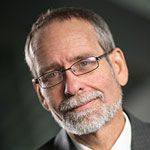
|
Mark Yandell, Human Genetics: Mark Yandell, PhD has led software development groups in both industry and academia. As a postdoc at the Human Genome Project at Washington University, St. Louis, he was a co-developer of the PolyBayes package, the first probabilistic algorithm for sequence variant discovery. Thereafter, he joined Celera Genomics, where he directed the group that wrote much of the software used to annotate and analyze the Drosophila, Human, Mouse, and mosquito genomes. From 2001-2005 he was a senior scientist for Howard Hughes Medical Institute (HHMI), where he led the comparative genomics group at the Berkeley Drosophila Genome Project. Since 2005, he has been a faculty member in the Eccles Institute of Human Genetics at the University of Utah. Dr. Yandell is an internationally recognized expert in software for comparative and functional genomics. He has served on the Scientific Advisory Boards of numerous genome projects. He is Director of the Eccles Institute’s Bioinformatics program, and frequent guest lecturer in several CSHL courses on genomics, programming and sequence analysis. He is also co-author of the O’Reilly Book on BLAST. Current projects in his laboratory include an NSF program grant for annotation of plant genomes; NIGMS support for genomics-based venom studies using the cone snail Conus bullatus;; and support from the NHGRI and NIGMS for VAAST, a probabilistic disease gene finder for personal genome sequences. Dr. Yandell is technical director of the Utah Genome Project (UGP), an intramural, multi-million dollar effort to improve patient care and facilitate research on undiagnosed diseases, Co-director of the USTAR Center for Genetic Discovery, Adjunct Professor of Biomedical Informatics, a member of the Huntsman Cancer Institute’s Cancer Control and Population Sciences Program, and H.A. and Edna Benning Presidential Endowed Chair at the University of Utah. Research in his group is genomics-based and focused on two areas: genome annotation and understanding the consequences of sequence variants. Toward these ends, they have developed two highly successful tools: MAKER, an easy-to-use genome annotation pipeline, and VAAST, a probabilistic disease-gene finder for personal genome sequences. Software abounds in the genomics domain; what distinguishes MAKER and VAAST is their scalability and scope of application. Both tools are designed to operate on very large and heterogeneous next-generation sequencing datasets. The outputs of these tools don’t merely result in publications, they nucleate communities. Consequently, his lab has become an international nexus for genomics collaborations. Recent MAKER collaborations include the genome-annotation and analyses of Maize, venomous snails, the Coelacanth, the sacred lotus, the alga Nannochloropsis, the Gibbon, the Lamprey and the King Cobra. VAAST collaborations include searches for genes and alleles involved in autism, breast cancer, Crohn disease, cardiovascular disease, cavernous angiomas, and atypical cystic fibrosis. Also underway are extensions to VAAST that enable computation upon large pedigrees (pVAAST), and Phevor, a tool that combines phenotype with genotype for patient diagnosis. VAAST, pVAAST, and Phevor comprise the backbone of the Utah Genome Project, a multimillion-dollar investment by the University of Utah in translational genomic medicine. Going forward, the integration of MAKER and VAAST will also provide a coordinated means to search the genomes of plant cultivars, animal breeds, and wild populations of flora and fauna for the genes and variants that underlie phenotypic traits. |
Mines and Earth Sciences

|
Jack Adams, Metallurgical Engineering: Dr. Adams' is a research professor in the Department of Metallurgy, College of Mines and Earth Sciences. He is a recognized expert in environmental microbiology and microbial process/bioremediation development. He is currently president of INOTEC, a company developing site-specific water treatment processes using new electro-biochemical technology. |
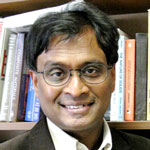
|
Ravi Chandran, Metallurgical Engineering: Dr. Chandran is a tenured Professor of Metallurgical Engineering at the University of Utah. He is with the department for over 20 years. His prior appointments include US National Research Council Research Fellowship at Wright Patterson Air Force, OH. His research encompasses diverse areas including mechanical behavior, fatigue, fracture mechanics, alloy development, computational material science, bio-medical implants and materials information systems. Currently, he is engaged in research on designing titanium materials by computational approaches and processing materials for manufacturing. He had served as a Director of the Utah State Center of Excellence for Advanced Titanium Materials, between 2003-2009. Dr. Chandran received the 2006 Champion Mathewson Award of the Minerals, Metals and Materials Society (TMS) of USA for notable contributions to metallurgical science. He has also received twice the outstanding teaching awards of the metallurgical engineering department. He is author of over 120 publications in leading materials journals including Nature Materials and Acta Materialia, and >80 presentations, both invited and contributed. He has graduated over 25 graduate students, including MS and PhD. He also consults for industry on metal failure analysis and forensics. |

|
Zac Fang, Metallurgical Engineering |

|
Tim Garrett, Atmospheric Sciences |

|
Siva Guruswamy, Metallurgical Engineering |

|
John Horel, Atmospheric Sciences: Dr. Horel’s research is centered on the observation and analysis of weather and climate processes in mountainous regions with particular interest in recent years on cold-air pools along the Wasatch Front and in the Uintah Basin associated with poor air quality. His current research activities include further development of MesoWest (see mesowest.utah.edu), which provides access to surface weather observations for operational, research, and educational applications nationwide. A commercial firm, Synoptic, has been established to serve government and commercial customers of MesoWest. He also is involved in research related to improving access to boundary layer surface-based remote sensors, big data analytics, fire weather, the Great Salt Lake and Utah regional climate issues. Dr. Horel is a Fellow of the American Meteorological Society as well as received an Outstanding Service Award, National Weather Service Western Region, and College of Mines and Earth Sciences Outstanding Teacher Award. |

|
William Johnson, Geology and Geophysics |

|
Jan D. Miller, Distinguished Professor, Metallurgical Engineering: Jan D. Miller is the Ivor D. Thomas Distinguished Professor at the University of Utah where he has served on the Metallurgical Engineering faculty for 45 years. From 2002 to 2013 he was the Chair of the Department of Metallurgical Engineering (10 tenure track faculty positions and about 100 students). He is well known for his numerous technical contributions with more than 600 publications, including 32 patents. Professor Miller is a member of the National Academy of Engineering and a Distinguished Member of SME. He has received Honorary Ph.D. Degrees from the University of Pretoria in South Africa and from the Gdansk University of Technology in Poland. In addition, he has Honorary Professorial Appointments from three universities in China and from the Chinese Academy of Sciences. |

|
Mano Misra, Metallurgical Engineering |
Nursing

|
Jodi Morstein, College of Nursing: Dr. Jodi Morstein is an advanced practice registered nurse who specializes in working with children, teens and their families. She has over 25 years of experience as a clinician working in in-patient and out-patient settings. Her research interests have focused on the development of social competence in seriously emotionally disturbed youth and currently she is working on a technology based intervention for children and adolescents with ADHD. |

|
Lauri Linder, Nursing: I hold a joint appointment as an Assistant Professor at the University of Utah College of Nursing and as a Pediatric Oncology Clinical Nurse Specialist at Primary Children's Medical Center. I have over 25 years of experience in pediatric oncology nursing. My research interests are in the area of symptom management in children and adolescents with cancer and include novel uses of technology to capture the symptom experience of children and adolescents with cancer. I am a member of the Consortium to Study Symptoms in Adolescents and Young Adults with Cancer (CS2AYAC). This consortium is a group of nurse researchers from five institutions across the United States with a shared interest in studying symptoms in adolescents and young adults with cancer. We have developed an innovative symptom assessment tool for adolescents and young adults with cancer using a heuristics approach that is delivered as an iPad application. We have established its initial feasibility and acceptability and are presently completing revisions with the support of The GApp Lab to support its use in future studies. I am also a recent recipient of a K23 Mentored Patient-Oriented Research Career Development Award from the National Institute of Nursing Research that will engage both school-age children and pediatric oncology healthcare providers in the development and initial evaluation of a symptom assessment app.. |

|
Kathi Mooney, College of Nursing |

|
Scott D. Wright, Gerontology Interdisciplinary Program (College of Nursing): Scott Wright is an associate professor with research interests in autism spectrum disorder (ASD) and aging issues (e.g., transition to adulthood, needs of college students on the autism spectrum, autism in mid and later life); and the role of technology and aging. He is the editor of the forthcoming book, The Challenge and Promise of Autism Spectrum Disorder in Mid and Later Life: A Sourcebook (Jessica Kingsley Publishers). He is the co-founder of NeuroVersity – a curriculum program (with educational materials and manuals) that leverages 3D design software to help develop personal, social, and vocational skills for transition-aged individuals of the autism spectrum. NeuroVersity is a community-based program that is strengths-based and interest-focused and collaborates with business and school programs (with previous sites in Salt Lake City The Dalles (Oregon), Boulder, (Colorado), and Orlando, (Florida). Scott is a Fellow of the Gerontological Society of America (GSA) and Fellow of the Association for Gerontology in Higher Education (AGHE). |
Pharmacy

|
Greg Bulaj, Medicinal Chemistry: Dr. Grzegorz Bulaj is an Associate Professor of Medicinal Chemistry in the College of Pharmacy since 2006, and a Research Assistant Professor in the Department of Biology since 1998; Senior Scientist and Director of Peptide Chemistry in Cognetix, Inc., (1999-2005) involved in many stages of drug development from discovery, through preclinical to clinical studies; Co-founder and Advisor, NeuroAdjuvants, Inc. in Salt Lake City (2006-present). Inventor and co-inventor on several patent applications. Over the last few years, Dr. Bulaj has been serving as a consultant for small biotech companies that specialize in peptide-based therapeutics. |

|
Hamid Ghadhari, Pharmaceutical Chemistry Hamid Ghandehari is Professor of Pharmaceutics & Bioengineering, Director of Utah Center for Nanomedicine, Co-Director of the Nano Institute of Utah, and Cofounder of Tharatarget, Inc., a drug delivery company focused on polymer therapeutics. His research focuses on design and development of polymeric drug and gene delivery systems and nanotoxicology. |

|
David Grainger, Pharmaceutical Chemistry: David W. Grainger is the George S. and Dolores Doré Eccles Presidential Endowed Chair in Pharmaceutics and Pharmaceutical Chemistry, Chair, Department of Pharmaceutics and Pharmaceutical Chemistry, and Professor of Bioengineering at University of Utah. Grainger's expertise is focused on improving implanted medical device performance, drug delivery of therapeutic proteins and live vaccines, nanomaterials interactions with human tissues, and innovating diagnostic devices based on DNA and protein biomarker capture. Grainger has >130 full research publications, organized 21 international scientific symposia, presented over 130 invited plenary symposia lectures, and several hundred other invited talks all over the world. Grainger has helped found three medical device companies, and sits on Scientific Advisory boards for 4 biomedical companies, and actively consults internationally with industries in applications of materials in biotechnologies and medicine. |

|
Glenn Prestwich, Medicinal Chemistry:Glenn D. Prestwich is Presidential Professor of Medicinal Chemistry and Presidential Special Assistant for Faculty Entrepreneurism at the University of Utah, where he created the Entrepreneurial Faculty Scholars program. He also chairs the U’s Internal Commercialization Coordination Council. He is also the Chancellor’s Distinguished Visiting Professor at Washington State University, and recently led an External Review of Innovation and Entrepreneurship at WSU. His research includes phospholipids in cell signaling, synthetic matrices for regenerative medicine, and anti-inflammatory glycosaminoglycans. He co-founded nine companies, including Echelon Biosciences, Glycosan BioSystems, Sentrx Animal Care, GlycoMira Therapeutics, Metallosensors, and Deuteria Agrochemicals. He is a 2013 Fellow of the National Academy of Inventors, recipient of the 2006 Utah Governor’s Medal for Science and Technology, the 2008 Volwiler Research Award of the AACP, the 2010 University of Utah Distinguished Scholarly and Creative Research Award, and the 2014 U of Utah Distinguished Innovation and Impact Award. During 41 years as a faculty member, he has over 650 publications (H-index 82) and 25 issued patents and has trained over 125 postgraduate scientists. He is a pilot, a first tenor, and an advocate for chamber music. |

|
Eric Schmidt, Medicinal Chemistry |

|
Steven White, Pharmacology and Toxicology |
Science

|
Dale Clayton, Biology: Dr. Dale H. Clayton is Professor of Biology in the College of Science. He received an M.S. in entomology at the University of Minnesota (1983) and a Ph.D. in evolutionary biology at the University of Chicago (1989). From 2004-2008 he was Director of the Center for Alternate Strategies of Parasite Removal (CASPeR) at the University of Utah. He is lead inventor of the LouseBuster™, a patented medical device that uses warm air to kill head lice on children and adults. Clayton is co-founder and CSO of Larada Sciences Inc., a university spinoff company founded in 2006 to market the LouseBuster™. The device is currently being used in more than 20 countries. Clayton is a frequent guest lecturer around the world and has published two books and numerous journal articles and book chapters. In 2008 he was awarded the American Society of Parasitologists' highest honor, the Ward Medal. |

|
Werner Gellerman, Physics and Astronomy: Werner Gellermann, a Research Professor in the Department of Physics and Astronomy, is working in the area of non-invasive optical detection technologies for medically important compounds in living human tissue. He is engaged in commercializing optical screening tests for eye health and nutritional antioxidant status in large populations. |

|
Sarah George, Biology: Sarah George is the Executive Director of the Natural History Museum of Utah and Adjunct Associate Professor of Biology. She oversaw the development, design, and construction of the new home for the Museum, the Rio Tinto Center, and manages a variety of research collections and labs, public, and school programs. The Museum is a venue for a wide array of multidisciplinary programs, many of which have been in partnership with Entrepreneurial Faculty Scholars. Receiving her Ph.D. In biology from the University of New Mexico, Dr. George was awarded the Directors Chair by the Western Museums Association in 2013 and was named a 2012 Pathfinder by the Salt Lake Chamber of Commerce. |

|
Chuck Grissom, Chemistry |

|
Erik Jorgenson, Biology |

|
David Kieda, Dean of Graduate School Dean and Professor of Physics and Astronomy: Kieda is Professor of Physics and Astronomy and Dean of the Graduate School at the University of Utah. He received his bachelor's degree in Physics at MIT (1982) and his PhD in Physics from the University of Pennsylvania (1989). Since his appointment as a faculty member at the University of Utah in 1990, Kieda has worked to establish and grow the University’s astronomy and astrophysics program. He helped set up a public observatory on campus and a high-altitude, research telescope in southern Utah. He also enrolled the university in major astronomy efforts like the Sloan Digital Sky Survey. He leads several national and international gamma-ray observatory projects. Kieda is the inventor of 15 US/International patents on quasicrystalline materials, electronic signal processing techniques and medical devices. He is the founder of Wildcat Consulting, a patent technology and intellectual property/defense consulting company. His largest impact patent /technology is Self-limiting Electrosurgical Return Pad, a joint project with MegaDyneMedical Products, Utah. The project dramatically reduces collateral tissue damage when preforming electrosurgery, and the reusable technology has found a very large market in third-world countries. Kieda is a Fellow of the American Physical Society, and received the Utah Governor’s Medal of Science and Technology (2013) and the University of Utah Distinguished Scholarly and Creative Research Award (2103). He served as chair of the Department of Physics and Astronomy from 207-2013, and as President of the Four Corners Section (Utah, Colorado, New Mexico, Arizona) of the American Physical Society. He has directly supervised research/degree for more than 100 Utah students, and is currently the Director of the U. of Utah’s Professional Master’s of Science and Technology Program. |

|
Shelley Minteer, Chemistry: Professor Shelley Minteer received her Bachelor's degree in Chemistry at Western Illinois University followed by her PhD in Analytical Chemistry at University of Iowa. In 2000, she moved to Saint Louis University as an Assistant Professor of Chemistry and started her research program on biofuel cells and biosensors. She has published greater than 150 publications and greater than 250 presentations at national and international conferences and universities and cofounded Akermin, Inc. She has won several awards including the Missouri Inventor of the Year, International Society of Electrochemistry Tajima Prize, and the Society of Electroanalytical Chemists' Young Investigator Award. In 2011, she moved from her position as the College of Arts and Sciences Endowed Professor of Chemistry at Saint Louis University to University of Utah as a USTAR Professor of Chemistry and Materials Science & Engineering. |

|
Nalini Nadkarni, Center for Science & Math Education: Dr. Nalini Nadkarni is a University of Utah Professor of Biology and the Director of the Center for Science and Mathematics Education. Her research is on the ecology of tropical rainforest canopies. She oversees teacher-training programs and innovates public engagement programs for non-traditional public audiences such as urban youth, artists, and the incarcerated. |

|
Henry White, Chemistry |
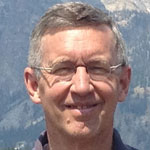
|
Clayton Williams, Physics and Astronomy: Clayton Williams is a Professor of Physics and Astronomy. He received his bachelor's degree in Physics at the University of Utah (1979) and his MS and PhD in Electrical Engineering from Stanford University (1981, 1984). He worked as a Research Staff Member at IBM’s T.J. Watson Research Center, Yorktown Heights, NY (1984-1990). While at IBM, he co-invented multiple types of Scanning Probe Microscopy, including the Scanning Capacitance Microscope and Scanning Thermal Microscope, which are used around the world. Williams was appointed as a faculty member of the Physics Department at the U. of Utah in 1990, where he leads a research group in the area of nanoscale physics. He has published over 100 papers, most of which describe the development of new measurement methodologies. He is a Fellow of the American Physical Society. He is the author of 16 patents. He founded a company Rocky Mountain Nanotechnology (2003), which manufactures Atomic Force Microscope probes for nanoscale electrical measurements. These probes are sold around the world. He also provides consulting in the area of semiconductor device characterization. |
Social and Behavioral Sciences

|
David Strayer, Psychology |

|
Cheryl A. Wright, Family and Consumer Studies (CSBS): Cheryl Wright is an associate professor with research interests in the creative and social-emotional development of children. Her current interest centers on community-based participatory research (CBPR) project focused on students with autism and their families. She is the co-founder of NeuroVersity - a technology based educational program for students with autism and related disorders. The program leverages 3D design software to enhance the social, personal and vocational skills of participating students. The program is strength (visual-spatial skills) and interest focused and research based. The NeuroVersity research team has published papers focusing on the family, sibling and grandparent involvement in the program. Additional papers have analyzed the social, creative and vocational environments that are enhanced through student and family participation. The long-range goal of the program is employment since individuals with autism have some of the highest rates on unemployment, underemployment and mal-employment. The program that started in Salt Lake City has been replicated in The Dalles (Oregon), Orlando (Florida) and Boulder (Colorado). |
Social Work

|
Troy Christian Andersen: Troy Christian Andersen, PhD., MSW, MS, LCSW, is a dementia specialist clinical social worker at the Center for Alzheimer's Care, Imaging and Research. This center operates a multi-disciplinary subspecialty neurology clinic where he works daily with individuals with cognitive and movement disorders and their families to prepare a detail individualized plan for progressive care supports. |

|
Jaehee Yi, College of Social Work: Jaehee Yi is an Assistant Professor in the College of Social Work. Her work has focused on understanding how individuals and families respond to life challenges and traumas, both positively and negatively, in the cultural context, and on developing programs to help them enhance their quality of life. She has used photo images and narratives to elicit their experiences and expressions in research and is now conducting a pilot intervention study using photo-taking and storytelling for cancer survivors.. |
Other

|
Tallie Casucci, MLIS, Innovation Librarian at the Spencer S. Eccles Health Sciences Library: Tallie Casucci, MLIS, is the Innovation Librarian at the Spencer S. Eccles Health Sciences Library. She partners with innovators and entrepreneurs to discover evidence-based knowledge, competitive intelligence, patents and prior art, and potential partners for the creation of emerging technologies, such as novel medical devices, games, and apps. Tallie has a Master of Library and Information Science from the University of Pittsburgh with a Specialization in Health Resources and Services. She earned a Bachelor of Arts in Exercise and Sport Science from the University of North Carolina, in addition to a Business Essentials Certificate from the Kenan-Flagler Business School.. |

|
Ray Levey, Director of Research and Science: Raymond is the Director of the Energy & Geoscience Institute (EGI) and a Research Professor in the College of Engineering at the University of Utah. He has over 30 years of experience in the energy field. He has worked in research for the United States Geological Survey, Shell Oil Company and prior to joining the University of Utah in 1997 he was the Associate Director for International at the Bureau of Economic Geology at The University of Texas in Austin. He is a certified Petroleum Geologist and licensed geoscientist in the State of Texas and State of Utah and served for the office of the U.S. Secretary of Energy Resources as a special government employee (SGE). He also has advised the U.S. Department of Defense on energy matters globally. He holds a Ph.D. in Geology from the University of South Carolina. |

|
Greg Hatch, Associate Librarian, J. Willard Marriot Library: Greg Hatch is an associate librarian at the J. Willard Marriott Library, where he was recently appointed the Head of Creativity & Innovation Services, which supports University of Utah students, staff, and faculty in their transdisciplinary research and productivity, with an emphasis on arts and design, multimedia technology, experiential learning, and multimodal communication. From 2006-2015, Greg was the Head of the Katherine W. Dumke Fine Arts & Architecture Library, serving the scholarly and creative needs of the College of Fine Arts and the College of Architecture + Planning. He presents and publishes in the areas of Visual, Information, & Technology Literacies (VITL), Visual Communication, Dramaturgy, and Digital Scholarship. He earned his BA in Theater from Saint John’s University and the College of Saint Benedict (MN), and his MLIS from the University of Washington.. |

|
Dave Morrison, Marriott Library: Dave has been government information librarian and patent and trademark specialist for the J. Willard Marriott Library since January 1987; Associate Professor in 1994; and Professor as of 2014. He is the Patent and Trademark Resource Center (PTRC) representative to the United States Patent & Trademark Office (USPTO); attends annual training conferences at the USPTO in Washington, DC; and served there as the 13th Patent Fellow for 18 months. He regularly guest lectures on patent searching and innovation to graduate and undergraduate bioengineering classes; techTITANS, Bench2Bedside and bioDesign teams; Innovation Scholars and Lassonde Center students; interns at the Technology Commercialization Office (TCO); and as part of the Research Administration Training Series (RATS) program each semester. |

|
Tony Onofrietti, Office of VP for Research: Tony Onofrietti, M.S., CRSS, serves as the Director of Research Education at the University of Utah. He received a Master of Science (M.S.) degree from the College of Health at the University of Utah and a Bachelor of Business Administration (B.B.A.) degree from The University of Texas at Austin. Tony is the inventor of the RosterTech™ software application, (www.rostertech.com), a learning and data management system designed to support online education and training outreach. In 2005, Tony launched the "Research Administration Training Series" (RATS / www.education.research.utah.edu) for the University research community which includes a comprehensive curriculum of pre-award, post-award, clinical research, principal investigator and responsible conduct of research training classes. |

|
Tom Parks, VP for Research: Thomas N. Parks is Vice President for Research and Professor of Neurobiology & Anatomy. He was co-founder of NPS Pharmaceuticals Inc. (NASDAQ: NPSP) and a board member from 1986-2006 and has been a director or scientific advisor for several private technology companies. |

|
Marc Porter, Nano Institute |
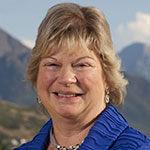
|
Jean P. Shipman, Spencer S. Eccles Health Sciences Library, Center for Medical Innovation: Jean P. Shipman, MSLS, AHIP, FMLA, is Executive Director, Knowledge Management & Spencer S. Eccles Health Sciences Library; Director for Information Transfer, Center for Medical Innovation; Director, MidContinental Region and National Training Office, National Network of Libraries of Medicine; Adjunct Faculty, Department of Biomedical Informatics, School of Medicine; and the Clifford C. Snyder Endowed Chair, University of Utah. She served as president of the Medical Library Association for 2006-2007. Jean graduated from Case Western Reserve University (MSLS) and Gettysburg College (BA, Biology). She designed and manages the innovative Synapse collaboration space within the Eccles Library. |

|
James Thompson, Technology and Venture Commercialization: James is currently the associate director of the Business Technology Development group and the engineering team lead at the University of Utah's Technology & Venture Commercialization office. James has over 14 years of industry experience in the biological sciences previously serving as director of R&D and executive director of the Spendlove Research Foundation, co-founder Quansys Biosciences and Petrobio Tech, director of new product development Echelon Biosciences, adjunct professor of Biology at Salt Lake Community College and the director of business development for both Frontier Scientific and Echelon Biosciences. |
